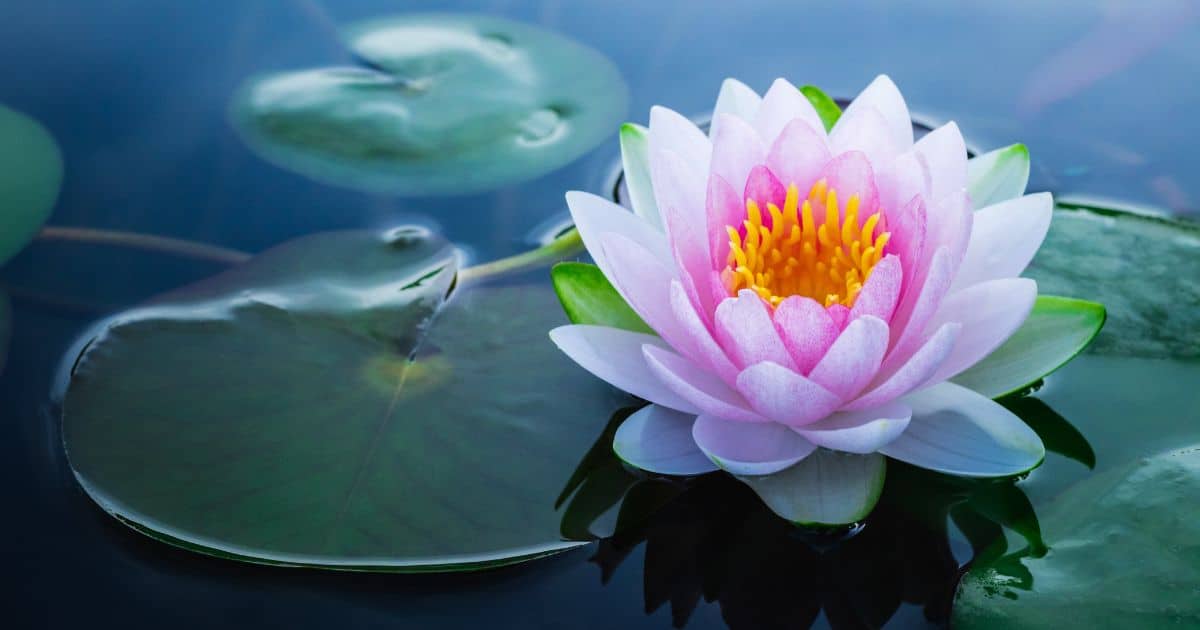In a world where symbolism weaves its magic into the fabric of our lives, few symbols hold the same captivating allure as the lotus flower. Delicate and captivating, this ancient flower has captivated hearts and minds for centuries, leaving an indelible mark on countless cultures and civilizations. And now, it takes center stage as a stunning centerpiece for the modern-day adornment: the lotus flower necklace.
Intertwined with deep spiritual and cultural significance, the lotus flower necklace serves as a powerful talisman, radiating beauty and wisdom. Its allure lies not only in its aesthetic appeal but also in the profound symbolism it carries. From ancient Egypt to India, the lotus flower has emerged as a potent symbol of purity, enlightenment, and rebirth. Its journey through time and across continents has imprinted it with a rich tapestry of meanings that continue to inspire and ignite our souls.
Join us on a transformative journey as we explore the depths of the lotus flower necklace’s significance, unravel its hidden messages, and discover the profound connections it holds to our existence. From the serene waters that birth its exquisite form to the transcendent spiritual realms it represents, we delve into the layers of symbolism that make the lotus flower necklace a truly remarkable piece of jewelry.
In this comprehensive guide, we will not only explore the cultural and historical context of the lotus flower but also dive into the spiritual and personal meaning it holds for individuals today. We will uncover the various interpretations that have shaped its symbolism over time, shedding light on its role as a symbol of rebirth, enlightenment, and spiritual awakening.
Whether you are drawn to its symbolism, seeking spiritual enlightenment, or simply captivated by its ethereal beauty, the lotus flower necklace offers a gateway to a world of profound meaning and self-discovery. Join us as we embark on this enlightening journey through time and culture, unearthing the secrets and significance that lie within the petals of the lotus flower necklace.
So, fasten your seatbelts, open your hearts, and prepare to immerse yourself in the captivating realm of the lotus flower necklace. Let us unlock the hidden mysteries and embrace the transformative power it holds, as we embark on “The Complete Guide to Lotus Flower Necklace Meaning and Symbolism.”

What does wearing a lotus flower necklace mean?
Are you curious about the symbolism behind wearing a lotus flower necklace? Look no further! In this article, we will explore the rich meaning behind this beautiful piece of jewelry.
The lotus flower has deep spiritual significance in many cultures and religions. It is often associated with purity, enlightenment, and rebirth. Its ability to emerge gracefully from muddy waters and bloom into a stunning flower has made it a powerful symbol of transformation and resilience.
Wearing a lotus flower necklace can be a personal reminder to stay grounded, even in challenging times, and to strive for personal growth and enlightenment. It can serve as a symbol of one’s own journey towards achieving inner peace and harmony. Whether you are drawn to the lotus flower for its aesthetic appeal or the profound symbolism it represents, wearing a lotus flower necklace can be a beautiful way to showcase your spirituality and individuality.
Symbolism of the lotus flower
The lotus flower holds deep symbolism in various cultures and belief systems. In Hinduism, the lotus is associated with divine beauty and purity. It is believed to represent the divine goddess, Lakshmi, who is the goddess of wealth, fortune, and prosperity. The lotus flower is often depicted in Hindu mythology as the seat of gods and goddesses, symbolizing their divine presence.
In Buddhism, the lotus flower is highly revered and is a symbol of enlightenment. Just as the lotus flower grows and blooms in muddy waters, it represents the journey of an individual towards enlightenment and spiritual awakening. The lotus flower is often depicted as the throne of Buddha, symbolizing his purity and transcendence from the material world.
In ancient Egyptian culture, the lotus flower symbolized rebirth and creation. It was associated with the sun god, Ra, and the goddess of life and fertility, Isis. The lotus flower was often depicted in Egyptian art and was believed to have healing properties.
The lotus flower also holds significance in other cultures such as Chinese, Japanese, and Native American. In Chinese culture, the lotus flower represents purity, grace, and beauty. It is often depicted in traditional art and literature. In Japanese culture, the lotus flower is a symbol of purity, enlightenment, and spiritual growth. In Native American culture, the lotus flower represents harmony, balance, and spiritual awakening.
Cultural significance of the lotus flower necklace
The lotus flower necklace carries cultural significance in various parts of the world. In India, the lotus flower is highly revered and is often worn as a necklace during religious ceremonies and festivals. It is believed to bring good luck, prosperity, and spiritual blessings to the wearer. The lotus flower necklace is also considered a sacred symbol in Indian culture and is worn as a protective talisman.
In Egypt, the lotus flower necklace has been worn for thousands of years and is associated with ancient Egyptian mythology and spirituality. It is believed to bring protection, healing, and spiritual enlightenment to the wearer. The lotus flower necklace is often crafted with precious metals and gemstones, making it a symbol of wealth and status.
In Chinese and Japanese cultures, the lotus flower necklace is worn as a symbol of purity, grace, and spiritual growth. It is often given as a gift to symbolize love, friendship, and good fortune. The lotus flower necklace is also worn during special occasions and celebrations.
Historical origins of the lotus flower necklace
The history of the lotus flower necklace dates back thousands of years. In ancient Egypt, the lotus flower necklace was worn by both men and women and was considered a symbol of beauty, fertility, and protection. It was often worn as an amulet to ward off evil spirits and bring good luck.
In ancient India, the lotus flower necklace was a sacred symbol and was worn by priests and spiritual leaders. It was believed to represent purity, enlightenment, and spiritual awakening. The lotus flower necklace was often made with gold and adorned with gemstones, making it a symbol of royalty and divine blessings.
In ancient China, the lotus flower necklace was worn by women as a symbol of beauty, grace, and femininity. It was often crafted with jade, which is considered a sacred stone in Chinese culture. The lotus flower necklace was also worn as a symbol of love and fidelity.
Different designs and styles of lotus flower necklaces
Lotus flower necklaces come in a variety of designs and styles, allowing individuals to choose a piece that resonates with their personal taste and style. Some lotus flower necklaces feature a single lotus flower pendant, while others may have multiple lotus flowers arranged in a pattern. The pendant itself may be made of various materials such as gold, silver, or precious gemstones.
For those who prefer a minimalist look, a simple lotus flower pendant on a delicate chain can create an elegant and understated statement. This style is perfect for everyday wear and can be easily paired with other necklaces for a layered look.
On the other hand, those who prefer a more bold and statement-making piece can opt for a larger lotus flower pendant with intricate detailing. These necklaces often feature additional embellishments such as diamonds or colored gemstones, adding a touch of luxury and glamour.
Another popular design is the lotus flower necklace with a floating pendant. In this style, the lotus flower pendant appears to be suspended in mid-air, creating a captivating and eye-catching effect. This style is often seen in modern and contemporary jewelry designs.
Wearing a lotus flower necklace as a fashion statement
Apart from its spiritual and symbolic significance, wearing a lotus flower necklace has become a popular fashion statement. The lotus flower’s simple and elegant design makes it a versatile piece of jewelry that can be worn with a variety of outfits and styles.
For a bohemian or nature-inspired look, a lotus flower necklace paired with flowy dresses, floral prints, or earthy tones can create a whimsical and free-spirited vibe. This style is perfect for outdoor events, music festivals, or beach vacations.
For a more sophisticated and formal look, a lotus flower necklace in gold or silver can be paired with a little black dress or a tailored suit. This style adds a touch of elegance and grace to any ensemble, making it suitable for weddings, parties, or formal occasions.
Wearing a lotus flower necklace can also be a way to express individuality and personal style. With the wide range of designs available, individuals can choose a lotus flower necklace that reflects their unique personality and taste. Whether it’s a dainty and delicate pendant or a bold and statement-making piece, the lotus flower necklace can be a beautiful and meaningful addition to any jewelry collection.
Spiritual and healing properties associated with lotus flower necklaces
In addition to its aesthetic appeal, lotus flower necklaces are believed to possess spiritual and healing properties. It is believed that wearing a lotus flower necklace can bring a sense of calmness, tranquility, and spiritual awakening to the wearer.
The lotus flower is often associated with the crown chakra, which is the energy center located at the top of the head. It is believed that by wearing a lotus flower necklace, the energy of the crown chakra is enhanced, allowing for a deeper connection to one’s higher self and spiritual consciousness.
The lotus flower is also believed to have healing properties. It is said to promote emotional healing, balance, and inner peace. Wearing a lotus flower necklace can help individuals release negative emotions, let go of past traumas, and embrace a more positive and enlightened mindset.
Popular celebrities and influencers wearing lotus flower necklaces
Lotus flower necklaces have gained popularity among celebrities and influencers who appreciate the symbolism and beauty of this unique piece of jewelry. Many celebrities can be seen wearing lotus flower necklaces on red carpets, in magazine spreads, or on their social media platforms.
One such celebrity is Emma Watson, who is known for her advocacy of sustainable fashion and ethical jewelry. She has been spotted wearing a lotus flower necklace on multiple occasions, showcasing her love for both the aesthetic and symbolic qualities of the lotus flower.
Another celebrity who has embraced the lotus flower necklace trend is Miranda Kerr. As a well-known advocate for holistic wellness and spirituality, she often incorporates lotus flower necklaces into her outfits. Miranda Kerr has spoken about the spiritual significance of the lotus flower and its ability to inspire personal growth and transformation.
In the influencer world, lotus flower necklaces have become a popular accessory among those who promote spirituality, mindfulness, and self-care. Influencers often share their personal journeys and experiences with the lotus flower necklace, using it as a symbol of their own growth and enlightenment.
How to care for and clean a lotus flower necklace
Taking proper care of your lotus flower necklace will help ensure its longevity and beauty. Here are some tips on how to care for and clean your lotus flower necklace:
- Store your lotus flower necklace in a clean and dry place, away from direct sunlight and moisture. This will help prevent tarnishing and damage to the pendant and chain.
- Avoid wearing your lotus flower necklace while swimming, showering, or participating in any activities that may expose it to water or harsh chemicals. This can cause the metal to tarnish or the gemstones to become dull.
- Clean your lotus flower necklace regularly using a soft cloth or a jewelry cleaning solution specifically designed for the type of metal used in the necklace. Gently wipe the pendant and chain to remove any dirt or oils.
- If your lotus flower necklace has gemstones, be sure to clean them with a soft brush or cloth to remove any debris. Avoid using harsh chemicals or abrasive materials that can scratch or damage the gemstones.
- If your lotus flower necklace becomes tarnished, you can use a jewelry polishing cloth or a mild jewelry cleaning solution to restore its shine. Follow the manufacturer’s instructions for the specific cleaning solution you are using.
By following these simple care tips, you can keep your lotus flower necklace looking beautiful and radiant for years to come.
-
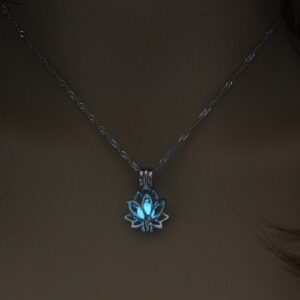 Hollow Yoga Lotus Flower Luminous Pendant Necklace
Hollow Yoga Lotus Flower Luminous Pendant Necklace -
 White Howlite Stone with Lotus Charm Necklace 108 Mala Beads
White Howlite Stone with Lotus Charm Necklace 108 Mala Beads -
 Lapis Lazuli Crystal Mala Beads Lotus Pendant Necklace
Lapis Lazuli Crystal Mala Beads Lotus Pendant Necklace -
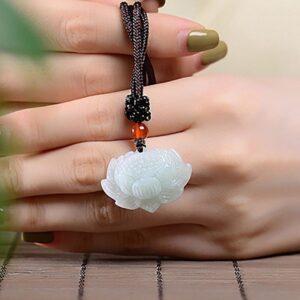 Natural Myanmar Jadeite Stone Lotus Flower Pendant Necklace
Natural Myanmar Jadeite Stone Lotus Flower Pendant Necklace -
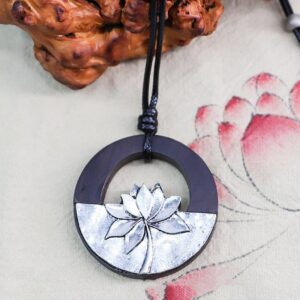 Native Style Black Sandalwood Lotus Flower Necklace
Native Style Black Sandalwood Lotus Flower Necklace -
 Lotus Flower Evil Eye Sterling Silver Pendant Necklace
Lotus Flower Evil Eye Sterling Silver Pendant Necklace -
 Tibetan Jiugong Card Rotatable Lotus Pendant
Tibetan Jiugong Card Rotatable Lotus Pendant -
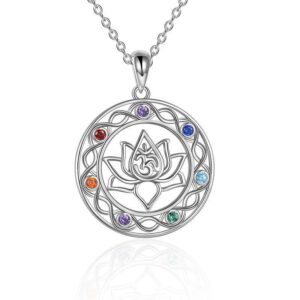 7 Chakra Zircon Stones OM Lotus Celtic Silver Pendant Necklace
7 Chakra Zircon Stones OM Lotus Celtic Silver Pendant Necklace -
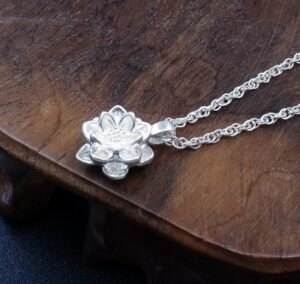 Spiritual Enlightenment Silver Lotus Flower Necklace
Spiritual Enlightenment Silver Lotus Flower Necklace
Where to buy lotus flower necklaces
Lotus flower necklaces can be found in various jewelry stores, both online and offline. Here are some popular places where you can buy lotus flower necklaces:
- Online jewelry retailers: Websites such as Etsy, Amazon, and eBay offer a wide range of lotus flower necklaces in different styles and price ranges. You can browse through the collections, read customer reviews, and choose a necklace that suits your preferences.
- Local jewelry stores: Visit your local jewelry stores and boutique shops to explore their selection of lotus flower necklaces. This allows you to see the pieces in person, try them on, and get a feel for their quality and craftsmanship.
- Spiritual and wellness stores: Some stores specializing in spiritual and wellness products may carry lotus flower necklaces. These stores often focus on items that promote mindfulness, meditation, and personal growth.
- Custom jewelry designers: If you are looking for a unique and personalized lotus flower necklace, consider working with a custom jewelry designer. They can create a one-of-a-kind piece that is tailored to your preferences and specifications.
When purchasing a lotus flower necklace, it is important to consider factors such as the quality of materials used, craftsmanship, and the reputation of the seller. Read customer reviews, check for certifications or guarantees, and choose a reputable seller to ensure you are getting a high-quality piece.
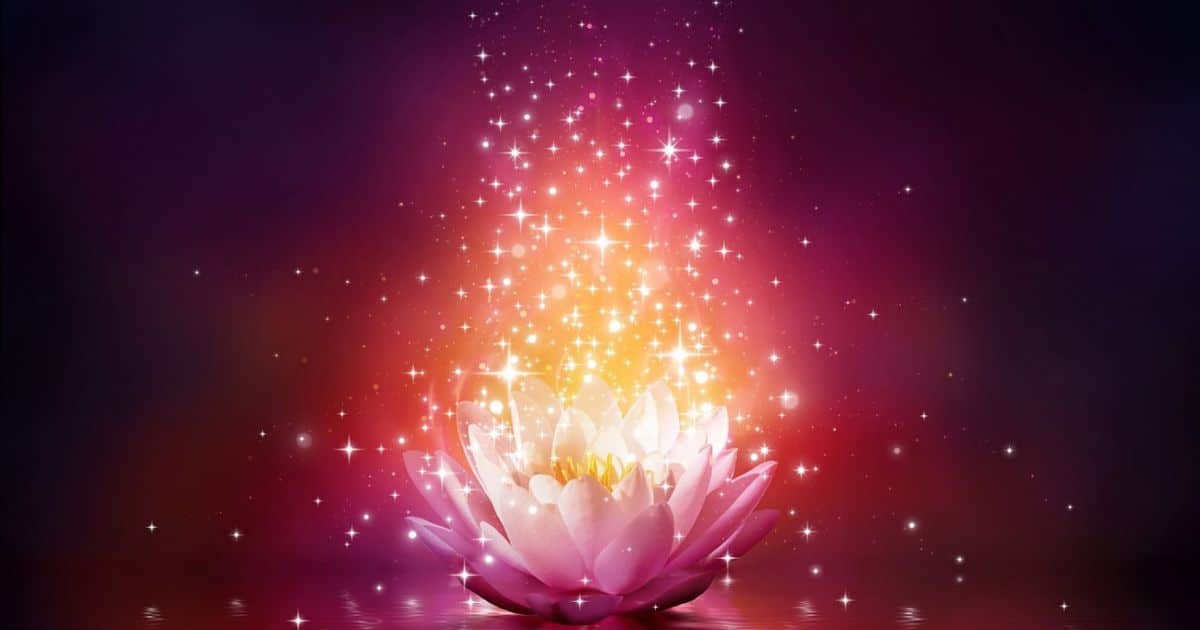
What are the benefits of wearing a lotus flower necklace?
The lotus flower necklace is not just a beautiful accessory, but it also carries a deep symbolism and numerous benefits. The lotus flower is a powerful symbol of purity, enlightenment, and rebirth. Wearing a lotus flower necklace can bring these qualities into your life and help you cultivate a sense of inner peace and tranquility.
Spiritual Benefits of Wearing a Lotus Flower Necklace
Wearing a lotus flower necklace is believed to have numerous spiritual benefits. The lotus flower is often associated with the crown chakra, which is located at the top of the head and represents spiritual connection and enlightenment. By wearing a lotus flower necklace, you can enhance the energy flow in this chakra and promote a deeper sense of spiritual well-being.
The lotus flower is also believed to bring harmony and balance to the mind, body, and spirit. It is said to help cleanse negative energy and promote positive thoughts and emotions. By wearing a lotus flower necklace, you can create a sense of peace and serenity within yourself and the world around you.
Emotional Benefits of Wearing a Lotus Flower Necklace
In addition to its spiritual benefits, wearing a lotus flower necklace can also have a positive impact on your emotional well-being. The lotus flower is often associated with purity and emotional resilience. It is believed to help balance emotions and promote a sense of calm and tranquility.
Wearing a lotus flower necklace can serve as a gentle reminder to let go of negative emotions and embrace a more positive mindset. It can help you navigate through life’s challenges with grace and resilience, just as the lotus flower rises above the muddy waters. By wearing this necklace, you can cultivate a sense of inner peace and emotional stability.
Physical Benefits of Wearing a Lotus Flower Necklace
While the benefits of wearing a lotus flower necklace are primarily spiritual and emotional, it is believed to have some physical benefits as well. The lotus flower is often associated with healing and purification. It is said to enhance positive energy flow throughout the body and promote overall well-being.
Wearing a lotus flower necklace can help balance the energy centers in the body, known as chakras, and promote a sense of harmony and vitality. It can also help alleviate stress and anxiety, which can have a positive impact on physical health. By wearing this necklace, you can experience a greater sense of energy and vitality in your daily life.
Choosing the Right Lotus Flower Necklace for You
When choosing a lotus flower necklace, it is important to consider your personal style and preferences. There are various designs and materials available, ranging from delicate and minimalist to bold and statement-making. Consider whether you prefer a necklace made of sterling silver, gold, or a combination of different materials.
You may also want to consider the size and shape of the lotus flower pendant. Some necklaces feature a small and subtle lotus flower, while others have a larger and more intricate design. Think about the message you want to convey and how you want the necklace to complement your overall style.
How to Style a Lotus Flower Necklace
The lotus flower necklace is a versatile accessory that can be styled in various ways. It can be worn alone as a simple and elegant statement piece or layered with other necklaces for a more bohemian and eclectic look. Pair it with a flowy dress or a casual t-shirt and jeans to add a touch of elegance and symbolism to your outfit.
You can also experiment with different necklace lengths to create different looks. A shorter necklace can be worn as a choker, while a longer necklace can be layered with other pieces to create a more dynamic and personalized style. The lotus flower necklace is a timeless piece that adds a touch of elegance and meaning to any outfit.

Is the lotus flower a symbol of luck?
Lotus flower as a symbol of luck
The lotus flower’s association with luck stems from its inherent qualities of resilience and beauty. Despite growing in murky and muddy waters, the lotus flower manages to rise above its surroundings and bloom into a magnificent flower. This ability to thrive in adverse conditions is often seen as a symbol of good fortune and luck.
In many cultures, the lotus flower is believed to bring luck and prosperity to those who possess it or incorporate it into their lives. It is often used as a decorative element in homes and sacred spaces to attract positive energy and blessings. Whether it is displayed in the form of artwork, jewelry, or even as a living plant, the lotus flower is believed to bestow luck upon its beholders.
Stories and legends related to the lotus flower and luck
Throughout history, numerous stories and legends have emerged surrounding the lotus flower and its connection to luck. These tales often highlight the transformative power of the lotus flower and its ability to bring about positive change in people’s lives.
One such story comes from ancient China, where it is believed that a poor fisherman stumbled upon a lotus flower floating in a river. Intrigued by its beauty, he decided to keep it and brought it home. To his surprise, his luck started to change dramatically. He caught an abundance of fish, his financial situation improved, and he was able to provide for his family. The lotus flower was believed to be the catalyst for this change, and it became a symbol of luck and prosperity in Chinese culture.
How to incorporate the lotus flower as a symbol of luck in your life
If you’re interested in incorporating the lotus flower as a symbol of luck in your life, there are various ways to do so. One simple way is to display artwork or sculptures featuring the lotus flower in your home or workspace. This can serve as a constant reminder of the resilience and beauty that the lotus flower represents.
Another way to incorporate the lotus flower as a symbol of luck is through jewelry. Lotus flower bracelets, earrings, or rings can be worn as a personal talisman, attracting positive energy and fortune. Additionally, wearing lotus flower-inspired clothing or accessories can serve as a subtle way to connect with the symbolism of luck and resilience.
It’s important to remember that the true power of the lotus flower lies in its symbolism and the meaning we attach to it. By embracing the qualities of the lotus flower – resilience, purity, and the ability to rise above challenges – we can cultivate a mindset of luck and positivity in our everyday lives.
-
 Green Turquoise Glow In The Dark Spiritual Awakening Lotus Flower Bracelet
Green Turquoise Glow In The Dark Spiritual Awakening Lotus Flower Bracelet -
 Tourmaline Agate Mala Beads Lotus Flower Buddhism Symbol Bracelet
Tourmaline Agate Mala Beads Lotus Flower Buddhism Symbol Bracelet -
 Agate 7 Chakra Stones Yoga Lotus Flower Purity Symbol Bracelet
Agate 7 Chakra Stones Yoga Lotus Flower Purity Symbol Bracelet -
 Natural White Bodhi Root 108 Beads Lotus Japamala Prayer Bracelet
Natural White Bodhi Root 108 Beads Lotus Japamala Prayer Bracelet -
 Cool Black Agate Stone Lotus Flower Hindu Symbol Bracelet
Cool Black Agate Stone Lotus Flower Hindu Symbol Bracelet -
 Natural Agate Stone Beads Gold Lotus Flower Buddhism Symbol Bracelet
Natural Agate Stone Beads Gold Lotus Flower Buddhism Symbol Bracelet -
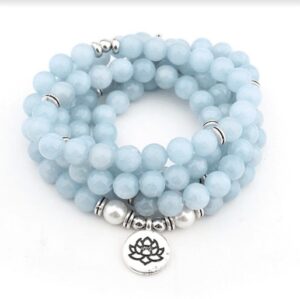 108 Mara Pearl Mala Beads Silver Lotus Flower Bracelet
108 Mara Pearl Mala Beads Silver Lotus Flower Bracelet -
 Beautiful Purple Amethyst 108 Mala Beads Lotus Flower Hindu Symbol Bracelet
Beautiful Purple Amethyst 108 Mala Beads Lotus Flower Hindu Symbol Bracelet -
 Minimalist Black & White Rope Braided Lotus Flower Symbol Bracelet
Minimalist Black & White Rope Braided Lotus Flower Symbol Bracelet
Other symbols of luck in different cultures
While the lotus flower is widely regarded as a symbol of luck, it is by no means the only symbol associated with good fortune. Different cultures have their own unique symbols of luck, each with its own rich history and symbolism.
In Chinese culture, the dragon is considered a powerful symbol of luck and prosperity. It is believed to bring good fortune, wealth, and success to those who are born under its zodiac sign or who display dragon imagery in their homes or businesses.
In Irish folklore, the four-leaf clover is a well-known symbol of luck. Finding a four-leaf clover is said to bring good fortune and is often associated with leprechauns and mythical pots of gold at the end of rainbows.
In Japanese culture, the beckoning cat, or Maneki-neko, is a popular symbol of luck and prosperity. It is often seen in shops and restaurants, beckoning customers with its raised paw. The Maneki-neko is believed to bring good luck and fortune to its owners.
These are just a few examples of the many symbols of luck found across different cultures. Each symbol carries its own unique meaning and significance, reflecting the diverse beliefs and traditions of people around the world.
Is the lotus flower a symbol of love?
The lotus flower holds deep cultural and spiritual significance in various traditions across the world. Famed for its enchanting beauty and resilience, it has often been associated with love and affection. But is it truly a symbol of love? Let’s delve into the rich history and symbolism of the lotus flower to uncover its connection to matters of the heart.
Different interpretations of the lotus flower as a symbol of love
The lotus flower has been interpreted in various ways when it comes to matters of the heart. Some believe that the lotus’s ability to bloom in less than ideal conditions represents the power of love to flourish even in challenging circumstances. Just as the lotus rises above the muddy waters, love can transcend difficulties and thrive in even the most adverse situations.
Others see the gradual opening of the lotus’s petals as a metaphor for the gradual growth and deepening of love. Just as the flower opens slowly and reveals its beauty over time, love can evolve and become more profound as a relationship progresses. This interpretation suggests that love is not just an instant feeling but a continuous process of growth and discovery.
How the lotus flower is used in romantic gestures and gifts
Due to its association with love and beauty, the lotus flower is often used in romantic gestures and gifts. In some cultures, giving a lotus flower to a loved one is seen as a symbol of devotion and affection. It is also a popular choice for wedding bouquets and floral arrangements, as it represents purity and the blossoming of love.
Lotus-themed jewelry, such as necklaces and earrings, is also popular among those who appreciate the flower’s symbolism. Wearing lotus jewelry is believed to bring luck, love, and spiritual growth to the wearer.
-
 Lapis Lazuli Crystal Mala Beads Lotus Pendant Necklace
Lapis Lazuli Crystal Mala Beads Lotus Pendant Necklace -
 Natural Myanmar Jadeite Stone Lotus Flower Pendant Necklace
Natural Myanmar Jadeite Stone Lotus Flower Pendant Necklace -
 Native Style Black Sandalwood Lotus Flower Necklace
Native Style Black Sandalwood Lotus Flower Necklace -
 Lotus Flower Evil Eye Sterling Silver Pendant Necklace
Lotus Flower Evil Eye Sterling Silver Pendant Necklace -
 Tibetan Jiugong Card Rotatable Lotus Pendant
Tibetan Jiugong Card Rotatable Lotus Pendant -
 Hollow Yoga Lotus Flower Luminous Pendant Necklace
Hollow Yoga Lotus Flower Luminous Pendant Necklace -
 7 Chakra Zircon Stones OM Lotus Celtic Silver Pendant Necklace
7 Chakra Zircon Stones OM Lotus Celtic Silver Pendant Necklace -
 Spiritual Enlightenment Silver Lotus Flower Necklace
Spiritual Enlightenment Silver Lotus Flower Necklace -
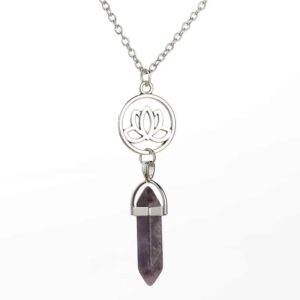 Amethyst Hexagon Column Lotus Flower Purity Symbol Necklace
Amethyst Hexagon Column Lotus Flower Purity Symbol Necklace
Common misconceptions about the lotus flower as a symbol of love
While the lotus flower is often associated with love, there are some common misconceptions about its symbolism. One misconception is that the lotus represents a perfect and idealized form of love. While the lotus is indeed a symbol of beauty and purity, it is important to remember that love, like the lotus, can also be messy, imperfect, and subject to change.
Another misconception is that the lotus flower symbolizes only romantic love. While it is true that the lotus is often used in the context of romantic relationships, its symbolism extends beyond that. The lotus can represent love in all its forms, including love for family, friends, and oneself.
Other flowers commonly associated with love and their meanings
While the lotus flower is a powerful symbol of love, it is not the only flower associated with matters of the heart. Different flowers have different meanings and can convey various emotions and sentiments.
For example, the rose is perhaps the most well-known flower associated with love. The red rose, in particular, symbolizes passionate love and desire. Other flowers, such as the tulip, symbolize perfect love, while the daisy represents innocence and purity.
The enduring allure of the lotus flower as a symbol of love
The lotus flower has a rich history and symbolism that has captivated hearts around the world. While its association with love is not universal, the lotus holds a special place in the realm of romance and matters of the heart.
Whether it represents the power of love to flourish in challenging conditions or the gradual growth and deepening of affection, the lotus flower continues to inspire and enchant. Its beauty, resilience, and spiritual significance make it a timeless symbol of love and devotion. Whether gifted as a flower, worn as jewelry, or admired in art, the lotus flower serves as a reminder of the enduring power of love in our lives.
So the next time you come across a lotus flower, take a moment to appreciate its beauty and reflect on the love it represents.

Is the lotus flower a feminine symbol?
The lotus flower has long been associated with beauty, purity, and serenity. Its delicate petals, often seen floating atop calm waters, conjure images of tranquility and grace. But is the lotus flower solely a feminine symbol? While traditionally linked to femininity in various cultures, the lotus also holds significance beyond gender.
Modern interpretations of the lotus flower as a feminine symbol
In contemporary society, the lotus flower continues to be embraced as a feminine symbol, albeit with modern interpretations. Its association with femininity has evolved to reflect changing societal norms and perspectives on gender. The lotus is often celebrated as a symbol of empowerment, representing the strength, resilience, and beauty of women.
The lotus flower has inspired various artistic and cultural movements that seek to celebrate and empower women. From fashion designs featuring lotus motifs to jewelry collections that capture the flower’s elegance, the lotus has become a popular symbol of femininity and self-expression. These modern interpretations emphasize the lotus’s ability to transcend traditional gender roles and empower individuals of all genders.
Debates and controversies surrounding the lotus flower’s gender symbolism
While the lotus flower has historically been associated with femininity, there are debates and controversies surrounding its gender symbolism. Some argue that reducing the lotus to a purely feminine symbol overlooks its broader significance and universal appeal. They suggest that the lotus represents qualities that transcend gender, such as resilience, enlightenment, and personal growth.
Others contend that the lotus’s association with femininity should be celebrated as a way to honor and uplift women. They argue that the lotus’s symbolism aligns with qualities traditionally associated with femininity, such as nurturing, compassion, and the ability to create and sustain life. Embracing the lotus as a feminine symbol can serve as a powerful statement of empowerment and solidarity.
Whether you view the lotus as a purely feminine symbol or appreciate its multifaceted significance, there’s no denying its timeless allure. The lotus flower reminds us that beauty and strength can coexist, transcending gender and embracing the human experience. It serves as a poignant reminder of the transformative power within each of us. The lotus’s symbolism in different cultures, its association with femininity in ancient civilizations, and its universal appeal in religious, spiritual, and artistic contexts all contribute to its rich and captivating symbolism. The lotus flower continues to inspire and empower individuals, offering a symbol of hope, resilience, and personal growth.

Is the lotus flower a peace symbol?
The lotus flower, with its delicate petals and stunning beauty, has captivated cultures around the world for centuries. But is it more than just a pretty face? Many believe that the lotus flower holds a deeper meaning as a symbol of peace. Its ability to emerge from murky waters and bloom in pristine beauty has long been seen as a metaphor for rising above obstacles and attaining inner peace.
But is the lotus flower universally recognized as a peace symbol? While it holds great significance in many Eastern cultures, its interpretation as a peace symbol may vary in other parts of the world. Nevertheless, the lotus flower’s association with peace and tranquility has made it a popular motif in art, jewelry, and tattoos, serving as a personal reminder for many individuals to seek inner serenity amidst life’s chaos.
Alternative peace symbols and their meanings
While the lotus flower is a widely recognized symbol of peace, there are other symbols that also represent peace and tranquility. These symbols vary across different cultures and carry their own unique meanings.
One such symbol is the olive branch, which has been used as a symbol of peace since ancient times. In Greek mythology, the goddess Athena planted the first olive tree as a symbol of peace and prosperity. The olive branch is often depicted in art and literature as a symbol of reconciliation and harmony.
Another well-known peace symbol is the dove. The dove has long been associated with peace and is often depicted carrying an olive branch in its beak. The dove’s symbolism can be traced back to ancient Mesopotamia, where it was associated with the goddess Ishtar, the goddess of love and fertility. The dove’s gentle nature and peaceful coexistence make it a powerful symbol of peace.
In addition to these symbols, there are countless other symbols of peace across different cultures, including the peace sign, the white flag, and the lotus flower itself. Each symbol carries its own unique meaning and resonates with different individuals and communities.
The lotus as a symbol of personal growth and transformation
Beyond its association with peace and tranquility, the lotus flower is also seen as a symbol of personal growth and transformation. The lotus’s journey from the murky depths of the water to the surface represents the transformation of the individual, rising above adversity and blossoming into one’s fullest potential.
The lotus’s ability to grow and thrive in challenging conditions serves as an inspiration for individuals facing their own obstacles. It reminds us that even in the darkest of times, there is the potential for growth and renewal. The lotus teaches us to embrace our challenges and use them as opportunities for personal growth and self-discovery.
Lotus flower peace campaigns and initiatives
The lotus flower’s symbolism of peace and tranquility has inspired various peace campaigns and initiatives around the world. These initiatives aim to promote peace, understanding, and harmony among individuals and communities.
One such initiative is the “Lotus Peace Petals” campaign, which was launched by the United Nations in 2012. The campaign encourages individuals to create paper lotus flowers and write messages of peace on them. These lotus flowers are then displayed in public spaces as a symbol of unity and peace.
Another initiative is the “Lotus Peace Festival,” an annual event held in various cities around the world. The festival brings together artists, musicians, and activists to celebrate peace and raise awareness about the importance of peaceful coexistence.
The enduring power of lotus symbolism in promoting peace
The lotus flower’s symbolism as a peace symbol has stood the test of time. Its association with peace, tranquility, and enlightenment has made it a powerful and enduring symbol in various cultures around the world.
While the lotus may not be universally recognized as a peace symbol, its profound symbolism and rich cultural significance cannot be denied. The lotus flower serves as a reminder for individuals to seek inner peace and rise above life’s challenges. Its ability to grow and bloom in adversity inspires us to embrace our own personal growth and transformation.
Whether it is used in religious rituals, artistic expressions, or peace initiatives, the lotus flower continues to inspire individuals and communities to strive for peace and harmony. Its timeless beauty and profound symbolism make it a symbol that transcends cultural boundaries and speaks to the universal human desire for peace and tranquility. So, let the lotus flower be a beacon of hope and a reminder of the power of inner peace in our lives.

What are the religions that consider the lotus flower sacred?
The lotus flower is an iconic symbol of spirituality and enlightenment, revered by various religions across the globe. Its beauty and serene nature have captivated the hearts and minds of many, making it a sacred symbol in several belief systems. Let’s explore the religions that hold the lotus flower in high regard and consider it as a sacred symbol.
Buddhism and the Lotus Flower
Buddhism, one of the oldest religions in the world, considers the lotus flower to be of great significance. In Buddhist art and literature, the lotus is often depicted as a representation of purity, divine birth, and enlightenment. It is believed that, just like the lotus rises from muddy waters to blossom into a beautiful flower, individuals can rise above the suffering and attachments of the material world to achieve spiritual enlightenment.
The lotus is also closely associated with the Buddha himself. In Buddhist scriptures, it is said that when Siddhartha Gautama, the founder of Buddhism, took his first steps as a newborn, lotus flowers bloomed miraculously under his feet. This event symbolized his divinity and marked the beginning of his journey towards enlightenment.
Moreover, the lotus flower is often used as an object of meditation in Buddhist practices. The act of focusing on the lotus, with its delicate petals and serene presence, helps practitioners cultivate mindfulness and attain a state of inner peace.
Hinduism and the Lotus Flower
In Hinduism, the lotus holds deep significance as well. It is associated with deities such as Lakshmi, the goddess of wealth and prosperity, and Saraswati, the goddess of knowledge and the arts. The unfolding petals of the lotus are seen as a metaphor for spiritual awakening and self-realization.
The lotus is often depicted in Hindu art and architecture, adorning temples and sacred spaces. It symbolizes purity, beauty, and divine grace. In fact, the lotus is considered so sacred that it is believed to be the seat of the gods and goddesses.
In Hindu mythology, the lotus also plays a role in the creation story. It is said that the universe was born from a lotus flower that emerged from the navel of Lord Vishnu. This mythological connection further enhances the lotus’ status as a sacred symbol in Hinduism.
Ancient Egypt and the Lotus Flower
The ancient Egyptian civilization also regarded the lotus as a symbol of rebirth and creation. It was often depicted in their art and mythology, representing the emergence of life and the renewal of the soul.
In Egyptian mythology, the lotus flower is associated with the god Atum, who is believed to have created the world by emerging from a lotus that grew out of the primordial waters of chaos. The lotus also has connections to other deities, such as Isis and Osiris, representing fertility, regeneration, and the afterlife.
The Egyptians also used the lotus as a decorative motif in their architecture, often incorporating it into pillars and capitals. Its presence in their sacred spaces further emphasized the lotus’ association with spirituality and divine power.
Native American and the Lotus Flower
While the lotus flower is predominantly associated with Eastern religions, it also holds significance in Native American cultures. The Native Americans, particularly the Lakota Sioux tribe, consider the lotus to be a sacred symbol of purity and enlightenment.
In Lakota Sioux mythology, the lotus is associated with White Buffalo Calf Woman, a divine figure who brought sacred rituals and teachings to the tribe. It is believed that she emerged from a white lotus flower and imparted spiritual wisdom to the people.
The lotus flower is also used in Native American rituals and ceremonies as a symbol of purification and spiritual growth. Its presence in these practices reinforces the belief in the lotus’ power to connect individuals with their higher selves and the divine.
Other Religions and Cultures that Consider the Lotus Flower Sacred
Apart from Buddhism, Hinduism, ancient Egypt, and Native American cultures, several other religions and cultures consider the lotus flower sacred. In Chinese culture, for example, the lotus is associated with purity and spiritual enlightenment, often depicted in art and literature.
In Tibetan Buddhism, the lotus is a recurring motif, symbolizing the purity and wisdom of the Buddha. It is often depicted as a throne for deities or as an offering in religious rituals.
The lotus is also revered in Jainism, where it represents purity and detachment from worldly desires. Jain temples often feature lotus motifs in their architecture and decorations.
In addition, the lotus flower holds significance in various African cultures, where it is associated with creation, rebirth, and the connection between the physical and spiritual realms.
The Significance of the Lotus Flower in Spiritual Practices
The lotus flower plays a crucial role in spiritual practices across the religions that consider it sacred. From meditation to rituals and ceremonies, the lotus is used as a focal point for connecting with the divine and cultivating inner growth.
In meditation, the lotus is often visualized as a symbol of purity and enlightenment. Practitioners imagine themselves as the lotus, rising above the challenges and distractions of the mind to attain a state of peace and clarity.
In rituals and ceremonies, the lotus is offered as a symbol of devotion and gratitude. Its presence serves as a reminder of the divine qualities that individuals seek to cultivate within themselves.

Is the lotus flower related to Buddhism?
The lotus flower is a sacred symbol in Buddhism, representing purity and spiritual enlightenment. Its significance can be traced back to ancient times, where it emerged as a powerful symbol in various cultures across Asia. But is the lotus flower truly related to Buddhism? Let’s delve deeper into this mystical connection.
Symbolism of the lotus flower in Buddhism
In Buddhism, the lotus flower holds deep symbolism and is revered as a representation of the journey towards enlightenment. It is believed to grow in muddy waters, yet emerges unblemished and beautiful. This extraordinary ability of the lotus to rise above the challenges and temptations of the material world resonates with the Buddhist teachings of transcending suffering and achieving spiritual liberation.
The unfolding petals of the lotus are seen as a metaphor for the stages of spiritual development. Just as the lotus gradually unfolds its petals to reveal its inner beauty, Buddhist practitioners aim to cultivate virtues and wisdom, gradually progressing towards enlightenment. The lotus flower serves as a reminder of the potential for growth and transformation that lies within each individual.
The lotus in Buddhist art and architecture
The lotus flower’s significance in Buddhism is also evident in the art and architecture of Buddhist temples and monasteries. From intricately carved stone sculptures to vibrant paintings, the lotus is a recurring motif that adorns these sacred spaces. Its presence serves as a visual reminder of the path to enlightenment and the purity that can be attained through spiritual practice.
In Buddhist architecture, the lotus is often depicted in the form of lotus-shaped pedestals, columns, and decorative motifs. These elements not only beautify the structures but also imbue them with a sense of sanctity and spiritual energy. The lotus, with its graceful and serene appearance, creates an atmosphere conducive to meditation and introspection.
The lotus in Buddhist scriptures
The lotus flower holds a prominent place in Buddhist scriptures, where it is mentioned in various sutras and teachings. One of the most well-known references to the lotus can be found in the Lotus Sutra, a revered text that expounds on the ultimate truth and the potential for enlightenment within all beings. The sutra uses the metaphor of a lotus pond to illustrate the diversity of spiritual capacities and the possibility for all individuals to attain enlightenment.
In addition to the Lotus Sutra, other Buddhist scriptures often make use of the lotus as a metaphor for spiritual awakening and the attainment of wisdom. These texts emphasize the purity and resilience of the lotus, highlighting its ability to thrive in adverse conditions and emerge unscathed.
The lotus as a metaphor for enlightenment
The symbolism of the lotus flower extends beyond its physical attributes to represent the state of enlightenment itself. Just as the lotus rises above the murky waters, so too does the enlightened individual transcend the suffering and delusions of the material world. The lotus serves as a powerful reminder that, no matter how challenging the circumstances, one can strive towards spiritual purity and liberation.
Furthermore, the lotus flower’s ability to blossom in unfavorable conditions serves as an inspiration for Buddhist practitioners. It teaches them that even in the face of adversity, they can cultivate inner strength and wisdom, ultimately attaining enlightenment. The lotus is a beacon of hope and resilience, guiding individuals on their spiritual journey.
The significance of the lotus in Buddhist teachings
In Buddhist teachings, the lotus flower is often used as an analogy to explain profound concepts. For example, the lotus is used to illustrate the principle of interdependence, highlighting that all beings are interconnected and influenced by one another, just like the interconnected petals of a lotus flower.
The lotus also serves as a reminder of impermanence, a central tenet of Buddhism. Just as the lotus blooms and eventually withers away, all things in life are subject to change and transience. This understanding of impermanence encourages individuals to cultivate mindfulness and appreciate the present moment.
The lotus flower in meditation and mindfulness practices
The lotus flower is frequently used as a focal point in meditation and mindfulness practices. Its serene and elegant appearance helps individuals cultivate a sense of calm and tranquility during their meditation sessions. By visualizing themselves as the lotus flower, practitioners can embody its qualities of purity, resilience, and spiritual growth.
Moreover, the lotus is often associated with the concept of the “lotus posture” in meditation. The lotus posture involves crossing the legs and resting the feet on the opposite thighs, resembling the shape of a lotus flower. This posture is believed to promote stability, balance, and a deep sense of grounding during meditation.
How to incorporate the lotus flower into your personal spiritual practice
If you are interested in incorporating the lotus flower into your personal spiritual practice, there are several ways to do so. One simple practice is to visualize a lotus flower during meditation, imagining its unfolding petals as a representation of your own spiritual growth.
You can also bring the lotus into your daily life by surrounding yourself with lotus imagery. This could include having lotus artwork in your home, wearing lotus-inspired earrings, or even growing a lotus plant if feasible. These physical reminders can serve as constant symbols of your spiritual aspirations and help cultivate a sense of mindfulness in your daily activities.
-
 Silver Jewish Symbols Spiritual Awakening Lotus Flower Earrings
Silver Jewish Symbols Spiritual Awakening Lotus Flower Earrings -
 Unique White Pearl Silver Women’s Lotus Flower Bud Earrings
Unique White Pearl Silver Women’s Lotus Flower Bud Earrings -
 Beautiful White Pearl Blue Gold Lotus Flower Purity Symbol Earrings
Beautiful White Pearl Blue Gold Lotus Flower Purity Symbol Earrings -
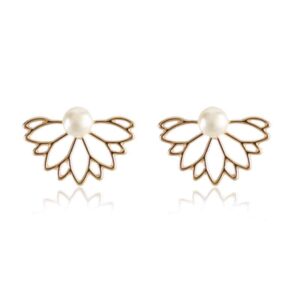 White Pearl Silver & Gold Women’s Lotus Flower Purity Symbol Stud Earrings
White Pearl Silver & Gold Women’s Lotus Flower Purity Symbol Stud Earrings -
 Gold & Silver Hollow Lotus Flower Rectangular Stud Earrings
Gold & Silver Hollow Lotus Flower Rectangular Stud Earrings -
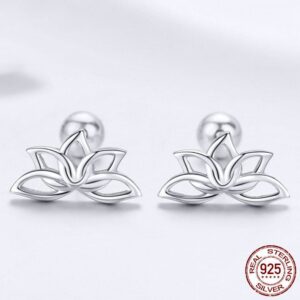 Minimalist Silver Women’s Yoga Lotus Flower Earrings
Minimalist Silver Women’s Yoga Lotus Flower Earrings -
 Artistic White Pearl Blue Women’s Lotus Flower Stud Earrings
Artistic White Pearl Blue Women’s Lotus Flower Stud Earrings -
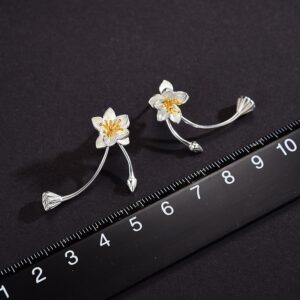 Elegant Refined Silver & Gold Women’s Lotus Flower Earrings
Elegant Refined Silver & Gold Women’s Lotus Flower Earrings -
 Unique White Jade Lotus Flower Purity Symbol Drop Earrings
Unique White Jade Lotus Flower Purity Symbol Drop Earrings
In addition, studying Buddhist teachings that discuss the symbolism of the lotus flower can deepen your understanding of its significance. By exploring the rich spiritual traditions associated with the lotus, you can gain insights into your own spiritual path and connect with the timeless wisdom of these ancient traditions.
Understanding the deep connection between the lotus flower and Buddhism
The lotus flower is certainly related to Buddhism, but its symbolism extends far beyond a single religion. Its association with purity, spiritual enlightenment, and resilience has transcended cultural and religious boundaries, making it a shared symbol of spirituality and inner growth.
The lotus flower’s deep connection to Buddhism can be seen in its symbolism, its presence in Buddhist art and architecture, its mention in scriptures, and its metaphorical representation of enlightenment. However, its significance is not limited to Buddhism alone. The lotus holds profound meaning in Hinduism, Jainism, Sikhism, and various other cultures across Asia.
Embracing the symbolism of the lotus flower can enrich one’s spiritual practice, regardless of religious affiliation. By incorporating the lotus into meditation and mindfulness practices, as well as surrounding oneself with lotus imagery, individuals can tap into its transformative qualities and cultivate a deeper connection with their own inner wisdom.
Ultimately, the lotus flower serves as a reminder of the inherent potential for growth, resilience, and spiritual awakening that resides within each of us. Just as the lotus rises above the muddy waters, we too can rise above the challenges and distractions of life, unfolding our true selves with grace and beauty. The lotus flower is a timeless symbol of hope, reminding us that no matter where we are on our spiritual journey, enlightenment is always within reach.
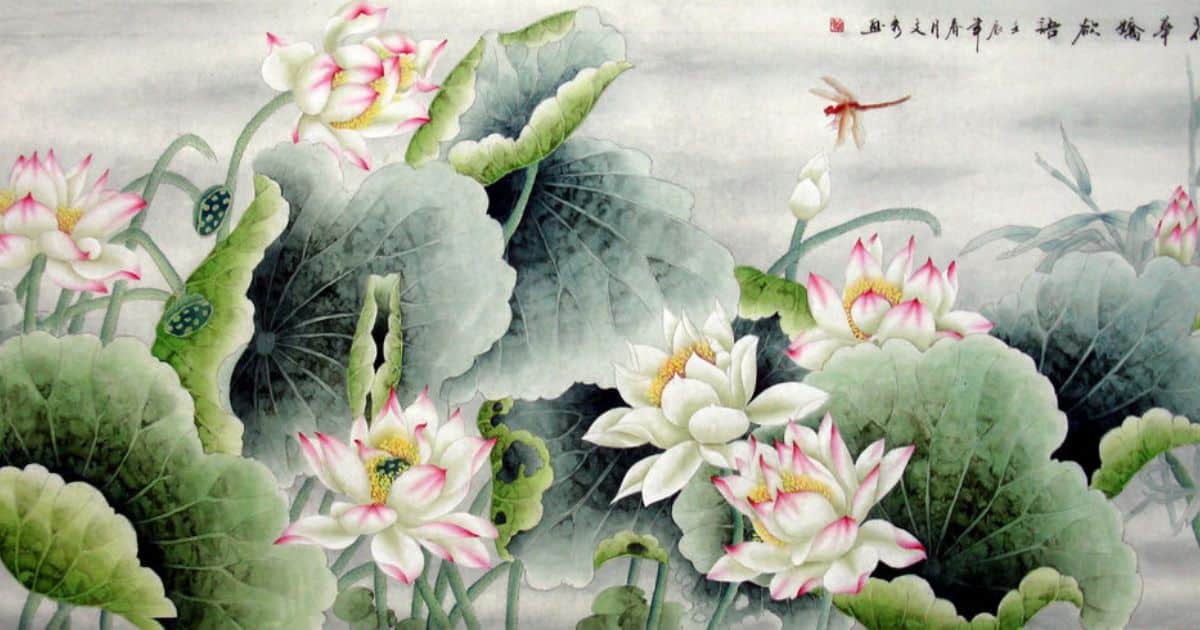
Is the lotus flower Chinese or Japanese?
Are you curious about the origins of the lotus flower, but unsure if it is Chinese or Japanese? You’ve come to the right place. The lotus flower holds immense symbolism in both cultures, representing purity, enlightenment, and rebirth. However, identifying its exact origins can be a bit challenging, as the flower has been deeply intertwined with the cultural fabric of both China and Japan for centuries.
The symbolism of the lotus flower in Chinese culture
In Chinese culture, the lotus flower is revered for its ability to rise above the muddy waters and bloom with pristine beauty. It is seen as a symbol of purity, grace, and perfection. The lotus is often associated with the Buddhist concept of enlightenment, as it represents the journey from darkness to light.
The lotus flower is a common motif in Chinese art, architecture, and literature. It is frequently depicted in paintings, sculptures, and even on porcelain. The flower’s elegant form and vibrant colors are captured in exquisite detail, showcasing the Chinese people’s deep appreciation for its beauty.
According to Chinese mythology, the goddess of mercy, Guanyin, is often depicted holding a lotus flower. This further emphasizes the flower’s association with compassion, kindness, and transcendence. The lotus is also a popular subject in Chinese poetry, where it is often used as a metaphor for inner strength and spiritual growth.
The symbolism of the lotus flower in Japanese culture
In Japanese culture, the lotus flower, known as “hasu” or “renge,” holds a similar symbolic meaning as in Chinese culture. It is seen as a representation of purity, enlightenment, and the transient nature of life. The lotus is deeply ingrained in Japanese society and has become a significant part of their art, religion, and folklore.
One of the most famous depictions of the lotus flower in Japanese culture is the “Floating World” art movement of the Edo period. This art style often featured beautiful geishas surrounded by lotus flowers, creating a sense of serenity and tranquility. The lotus is also a common motif in Japanese gardens, where it is meticulously cultivated for its aesthetic appeal.
In Japanese Buddhism, the lotus flower is a powerful symbol of spiritual awakening. It represents the journey towards enlightenment and the ability to overcome obstacles in one’s path. Many Buddhist temples in Japan feature lotus ponds, where visitors can meditate and reflect on the flower’s profound symbolism.
The historical origins of the lotus flower in China
The lotus flower has its roots in ancient China, where it is believed to have originated thousands of years ago. The flower’s association with purity and enlightenment can be traced back to early Chinese mythology and folklore.
According to legend, the goddess Nuwa, who is credited with creating mankind, is said to have used mud from the Yellow River to form the first human beings. As she molded the figures, lotus flowers sprung up in her footsteps, symbolizing the purity and goodness of her creation.
Over time, the lotus flower became deeply embedded in Chinese culture, appearing in various forms of art and literature. It was often used as a decorative motif in ancient Chinese architecture, symbolizing harmony and balance. The lotus also held great significance in Confucianism, representing moral integrity and self-cultivation.
The historical origins of the lotus flower in Japan
While the lotus flower is native to China, it made its way to Japan during the Han Dynasty, around the 3rd century AD. The flower’s introduction to Japan was met with great enthusiasm, and it quickly became a beloved flower in Japanese society.
The lotus flower’s arrival in Japan coincided with the spread of Buddhism, which greatly influenced Japanese culture and beliefs. The Buddhist concept of enlightenment, symbolized by the lotus flower, resonated deeply with the Japanese people, and the flower became closely associated with religious practices and rituals.
Japanese artists and craftsmen embraced the lotus flower as a subject for their creations, incorporating it into various art forms such as painting, pottery, and textiles. The lotus also found its way into Japanese poetry, where it was celebrated for its beauty and symbolic meaning.
Differences in the depiction of lotus flowers in Chinese and Japanese art
While both Chinese and Japanese cultures hold the lotus flower in high regard, there are subtle differences in the way it is depicted in their respective art forms. In Chinese art, the lotus is often portrayed in a more realistic and naturalistic style, with intricate details and vivid colors. The focus is on capturing the flower’s delicate beauty and its connection to the natural world.
In contrast, Japanese art tends to emphasize simplicity and understatement. Lotus flowers in Japanese art are often depicted with fewer details and a more minimalist approach. The emphasis is on capturing the essence of the flower rather than its physical attributes.
Similarities in the depiction of lotus flowers in Chinese and Japanese art
Despite the differences in style, there are also striking similarities in the depiction of lotus flowers in Chinese and Japanese art. Both cultures appreciate the lotus for its purity and grace, and this is reflected in the way it is portrayed.
In both Chinese and Japanese art, the lotus is often shown in various stages of blooming, symbolizing the cycle of life and the passage of time. The flower’s petals are meticulously rendered, showcasing the artist’s attention to detail and their reverence for the lotus’ exquisite form.
Lotus flowers are also frequently depicted alongside other elements of nature, such as birds, fish, or insects. This combination of natural elements creates a harmonious composition and reinforces the lotus’ connection to the natural world.
Lotus flowers in Chinese and Japanese literature and poetry
The lotus flower has been a beloved subject in both Chinese and Japanese literature for centuries. It is often used as a metaphor for beauty, purity, and spiritual awakening.
In Chinese poetry, the lotus is praised for its ability to rise above adversity and bloom in the face of hardship. It is often associated with inner strength and resilience, serving as an inspiration for those facing challenges in life.
Japanese poets have also found inspiration in the lotus flower, using it as a symbol of impermanence and the fleeting nature of existence. The lotus is often depicted as a transient beauty that withers and fades, reminding us to cherish the present moment.
The significance of the lotus flower in Buddhist traditions in China
In Chinese Buddhism, the lotus flower holds great significance and is considered one of the most important symbols in the religion. It is often associated with the Bodhisattva Guanyin, who is revered as the embodiment of compassion and mercy.
The lotus is seen as a representation of the path to enlightenment and the ability to rise above the suffering of the world. Just as the lotus flower grows out of the muddy waters and blooms with purity, Buddhists strive to cultivate inner purity and transcend the cycle of birth and death.
Many Buddhist temples in China feature lotus ponds, where devotees can meditate and reflect on the lotus’ symbolic meaning. The lotus flower is also frequently depicted in Buddhist artwork, serving as a reminder of the ultimate goal of spiritual liberation.
The significance of the lotus flower in Buddhist traditions in Japan
In Japanese Buddhism, the lotus flower also holds a special place of importance. It is often associated with the Buddha Amitabha, who presides over the Western Pure Land, a paradise where beings can attain enlightenment.
The lotus is seen as a symbol of the Pure Land itself, representing the purity and beauty of this spiritual realm. Japanese Buddhists believe that by reciting the name of Amitabha, they can be reborn in the Pure Land and continue their journey towards enlightenment.
Lotus flowers are frequently used in Buddhist rituals and ceremonies in Japan. They are offered as a symbol of devotion and are believed to bring good luck and blessings to those who offer them.
The cultural significance of the lotus flower in China and Japan
The lotus flower holds immense cultural significance in both Chinese and Japanese traditions. It is revered for its beauty, purity, and spiritual symbolism, representing enlightenment, rebirth, and the ability to transcend the challenges of life.
While the lotus flower originated in China, it quickly found its way to Japan, where it became deeply embedded in the country’s art, religion, and literature. Both cultures have celebrated the lotus in their own unique ways, showcasing their appreciation for its grace and enduring beauty.
Whether it is depicted in Chinese paintings or Japanese gardens, the lotus flower continues to captivate the hearts and minds of people around the world. Its symbolism serves as a powerful reminder of the human capacity for growth, transformation, and spiritual awakening. So, the next time you encounter a lotus flower, take a moment to appreciate its timeless beauty and the profound cultural heritage it represents.

What does the lotus flower mean in yoga?
The lotus flower holds a significant meaning in the world of yoga, symbolizing purity, enlightenment, and spiritual awakening. With its roots deep in the muddy waters, it rises above the surface to bloom into a beautiful blossom, representing the journey of the soul from darkness to light.
Symbolism of the lotus flower in yoga philosophy
In yoga philosophy, the lotus flower is a powerful symbol that represents the journey towards self-realization and spiritual growth. Just as the lotus flower grows and blossoms in murky waters, practitioners are encouraged to find inner strength and resilience amidst life’s challenges. The lotus reminds us that despite the difficulties we may face, it is possible to rise above and achieve a state of enlightenment.
The lotus flower is often depicted with multiple layers of petals, each layer representing a different stage of spiritual development. As practitioners progress on their yoga journey, they peel away the layers of conditioning and ego, revealing their true essence and connecting with their higher self. This process of self-discovery and shedding of old patterns is beautifully mirrored in the unfolding of the lotus flower.
The lotus flower is also associated with the concept of detachment in yoga philosophy. Just as the lotus flower remains untouched by the muddy waters in which it grows, practitioners are encouraged to cultivate a sense of detachment from worldly attachments and desires. By letting go of attachments, one can experience true freedom and liberation.
The lotus flower as a representation of spiritual growth
The lotus flower serves as a powerful reminder that growth and transformation can occur even in the most challenging circumstances. As the lotus flower emerges from the depths of the muddy waters, it symbolizes the potential for spiritual growth and the ability to overcome obstacles. The lotus teaches us that beauty and strength can arise from the darkest and most difficult places.
In yoga, practitioners are encouraged to embrace their own journey of growth and transformation. Just as the lotus flower blooms, opening its petals to the world, practitioners are invited to step into their authenticity and express their true selves. The lotus flower reminds us that we can embrace our unique gifts and talents, even in the face of adversity.
The lotus pose (Padmasana) and its connection to the lotus flower
The lotus pose, or Padmasana, is an iconic seated posture in yoga that is often associated with the lotus flower. In this pose, the legs are crossed with the feet resting on opposite thighs, resembling the shape of a lotus flower. The lotus pose is known for its ability to open the hips and create a stable base for meditation and breathwork.
The lotus pose is not only a physical posture but also a symbol of inner stability and balance. By grounding ourselves through the connection with the earth, we can reach for higher states of consciousness. Just as the lotus flower remains rooted in the muddy waters while reaching for the light, the lotus pose reminds us to stay grounded and connected to our roots as we strive for spiritual growth.
Different colors of the lotus flower and their significance in yoga
The lotus flower comes in various colors, each with its own significance in yoga. The white lotus symbolizes purity and spiritual perfection. It is associated with the highest level of enlightenment and is often depicted in the hands of deities. The red lotus represents passion, love, and compassion. It is associated with the heart chakra and the awakening of divine love within oneself.
The blue lotus represents wisdom and intellect. It is often associated with the throat chakra and the power of communication. The pink lotus symbolizes devotion and purity of the heart. It is often associated with the crown chakra and the connection to higher consciousness. The purple lotus represents spiritual enlightenment and the integration of body, mind, and spirit.
Incorporating the lotus flower into your yoga practice
There are various ways to incorporate the lotus flower into your yoga practice. One simple way is to bring awareness to the symbolism of the lotus flower during your practice. As you move through your asanas, visualize yourself as a lotus flower, blooming and unfolding with each breath. Allow the symbolism of the lotus to inspire you to embrace your own transformation and growth.
You can also incorporate lotus-inspired sequences and flows into your practice. Begin in a seated position, like the lotus pose, and move through a series of poses that open the hips and create a sense of stability and balance. As you flow through the sequence, imagine yourself as a lotus flower, gracefully moving through the water, rooted in the earth, and reaching for the light.
Lotus flower-inspired yoga sequences and flows
Here is a simple lotus flower-inspired yoga sequence to get you started:
- Begin in a seated position, with your legs crossed and your spine tall. Close your eyes and take a few deep breaths, bringing your awareness to the present moment.
- As you inhale, imagine the roots of a lotus flower growing from your sit bones, grounding you to the earth. As you exhale, visualize your spine lengthening, allowing the petals of the lotus to open.
- From your seated position, gently begin to sway from side to side, creating movement and fluidity in your hips. Imagine your hips as the stem of the lotus flower, allowing it to move with ease.
- Transition into a seated forward fold, extending your legs in front of you and reaching your hands towards your feet. As you fold forward, imagine your body as the closed bud of a lotus flower, slowly opening and unfolding with each breath.
- From your forward fold, come into a low lunge position, with one foot forward and the opposite knee on the ground. As you lift your torso, extend your arms overhead, imagining yourself as a fully bloomed lotus flower, reaching towards the sky.
- Repeat the low lunge on the opposite side, allowing the movement to flow with your breath. As you move through the sequence, visualize the lotus flower opening and closing, embodying the cyclical nature of life and growth.
Embracing the symbolism of the lotus flower in yoga practice
The lotus flower holds deep symbolism in the world of yoga, representing purity, enlightenment, and spiritual growth. By understanding and embracing the meaning of the lotus flower, practitioners can deepen their yoga practice and cultivate a sense of inner peace and transformation.
Whether you incorporate the lotus pose into your practice, visualize yourself as a blooming lotus flower, or explore lotus-inspired sequences and flows, the lotus flower serves as a powerful reminder to remain grounded and connected to the earth while reaching for higher states of consciousness.
Next time you roll out your yoga mat, take a moment to reflect on the symbolism of the lotus flower and allow it to guide you on your path to self-discovery and personal growth. Just as the lotus flower emerges from the depths of the muddy waters, you too have the potential to rise above and blossom into your most authentic self. Embrace the beauty of the lotus and let it inspire you on your journey towards enlightenment.
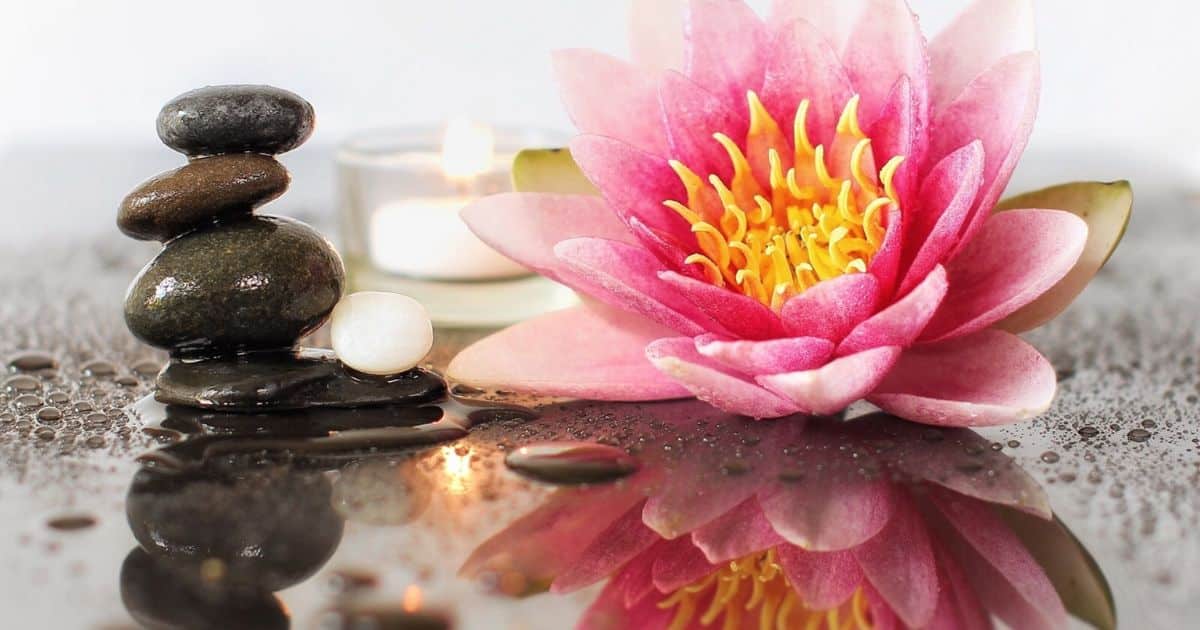
Is the lotus flower good for Feng Shui?
In the practice of Feng Shui, the lotus flower is often regarded as a symbol of purity, enlightenment, and rebirth. This captivating flower holds a significant place in ancient Eastern cultures and has been associated with various positive energies. But does the lotus flower really bring good luck and positive energy to your home?
Lotus flowers are renowned for their ability to purify surroundings and create a serene ambiance. According to Feng Shui principles, the lotus flower represents harmony, growth, and personal enlightenment. Its elegant and vibrant appearance is believed to attract positive energy and ward off negative vibes. By incorporating lotus flowers into your home decor, you may enhance the flow of vital energy, or chi, and promote balance and tranquility in your environment.
Whether you’re a Feng Shui enthusiast or simply curious about this ancient art, this article provides valuable insights into the power of the lotus flower and its potential impact on your living space. Get ready to discover the magnificence of this timeless emblem and uncover its significance in Feng Shui practices.
Symbolism and meaning of the lotus flower in Feng Shui
The lotus flower holds a deep symbolic meaning in Feng Shui. Its association with purity and enlightenment stems from its unique growth process. The lotus flower grows in muddy waters, yet it emerges pristine and untouched by its surroundings. This characteristic is seen as a metaphor for transcending difficulties and achieving spiritual growth.
In Feng Shui, the lotus flower is also considered a representation of the harmony between yin and yang energies. The flower’s ability to rise above the water’s surface symbolizes the triumph of light over darkness, and the balance between opposing forces.
The lotus flower’s symbolism extends further to its various colors. Each color holds a specific meaning in Feng Shui. The white lotus represents purity and spiritual perfection, while the pink lotus signifies love and compassion. The red lotus is associated with passion and strong emotions, while the blue lotus represents wisdom and knowledge.
By incorporating the lotus flower into your home or workspace, you invite these positive energies and qualities into your environment, creating a harmonious and balanced space.
How the lotus flower can improve Feng Shui in your home or workspace
Incorporating lotus flowers into your home or workspace can have a positive impact on the Feng Shui of the space. The flower’s vibrant colors and graceful form create a visually pleasing environment, enhancing the overall energy and ambiance.
The lotus flower is believed to attract positive energy and promote personal growth and enlightenment. By placing lotus flowers in strategic locations, you can enhance the flow of chi, or vital energy, in your space. This can help create a harmonious atmosphere that supports your well-being and productivity.
One effective way to incorporate lotus flowers into your Feng Shui practice is through artwork or decorations. Hang paintings or photographs of lotus flowers on your walls to infuse the space with their positive energy. You can also display sculptures or figurines of lotus flowers on shelves or tabletops, creating focal points that draw the eye and uplift the energy of the room.
Another way to harness the power of the lotus flower is through the use of lotus-themed textiles. Choose curtains, cushions, or rugs with lotus patterns to infuse your space with their symbolic energy. These textiles can add a touch of elegance and serenity to your home or workspace, promoting a sense of tranquility and balance.
Placement and positioning of the lotus flower for optimal Feng Shui
To optimize the Feng Shui benefits of the lotus flower, it is important to consider its placement and positioning in your space. The goal is to create a harmonious flow of energy that supports your well-being and promotes positive experiences.
When placing lotus flowers in your home or workspace, consider the Bagua, a Feng Shui energy map that divides spaces into nine areas representing different aspects of life. For example, if you want to enhance the energy of your relationships, place lotus flowers in the Relationship area of your home or bedroom.
In general, it is recommended to place lotus flowers in areas with stagnant or low energy. This can include corners, hallways, or areas that lack natural light. By adding lotus flowers to these spaces, you can invigorate the energy and create a more balanced and vibrant environment.
When positioning lotus flowers, it is important to consider their size and the overall aesthetic of the space. Avoid cluttering the area with too many flowers, as this can create visual chaos and disrupt the flow of energy. Instead, opt for a few carefully placed lotus flowers that create a focal point and enhance the overall energy of the room.
Different ways to incorporate the lotus flower into your Feng Shui practice
There are numerous ways to incorporate the lotus flower into your Feng Shui practice, allowing you to tailor its benefits to your specific needs and preferences. Here are some suggestions:
- Artwork and Decorations: Hang paintings or photographs of lotus flowers on your walls, or display sculptures and figurines of lotus flowers on shelves or tabletops.
- Textiles: Choose curtains, cushions, or rugs with lotus patterns to infuse your space with the lotus flower’s symbolic energy.
- Floral Arrangements: Place fresh or artificial lotus flowers in vases or bowls as centerpieces or decorative accents. You can also float lotus flowers in water-filled containers for a serene and visually captivating display.
- Essential Oils and Incense: Use lotus-scented essential oils or incense sticks to fill your space with the fragrance of the lotus flower. This can create a calming and soothing atmosphere.
- Jewelry and Accessories: Wear lotus-themed jewelry, such as rings or earrings, to carry the positive energy of the lotus flower with you throughout the day.
By incorporating the lotus flower in these various forms, you can infuse your space with its positive energy and create a harmonious environment that supports your well-being.
-
 Adjustable Spiral Double Lotus Flower Women’s Ring
Adjustable Spiral Double Lotus Flower Women’s Ring -
 Silver Retro Mantra Lotus Flower Adjustable Men’s Ring
Silver Retro Mantra Lotus Flower Adjustable Men’s Ring -
 Eight-Petal Lotus Flower Stainless Steel Adjustable Ring
Eight-Petal Lotus Flower Stainless Steel Adjustable Ring -
 Lotus Flower Flame Moissanite Engagement Ring
Lotus Flower Flame Moissanite Engagement Ring -
 Green Gemstone Adjustable Yoga Lotus Flower Ring
Green Gemstone Adjustable Yoga Lotus Flower Ring -
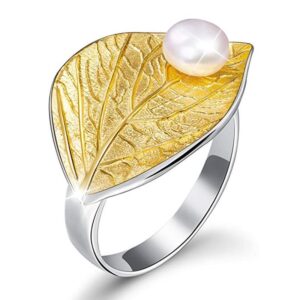 Lotus Leaf With Pearl Design Silver And Gold Ring
Lotus Leaf With Pearl Design Silver And Gold Ring -
 Carp And Lotus With Tassel Sterling Silver Women’s Ring
Carp And Lotus With Tassel Sterling Silver Women’s Ring -
 Silver Lotus Leaf Shape Inlaid Agate Stone Ring
Silver Lotus Leaf Shape Inlaid Agate Stone Ring -
 Silver Lotus Flower Purity Symbol Women’s Ring
Silver Lotus Flower Purity Symbol Women’s Ring
Other Feng Shui plants and flowers that complement the lotus flower
While the lotus flower holds a special place in Feng Shui practices, there are other plants and flowers that can complement its positive energy and enhance your living space. These plants and flowers can be used in conjunction with lotus flowers to create a well-rounded and balanced Feng Shui environment.
- Bamboo: Bamboo is often used in Feng Shui for its ability to bring luck, prosperity, and growth. Its tall and straight form represents strength and resilience. Place bamboo in areas where you want to enhance these qualities, such as the Wealth or Career areas of your home or workspace.
- Orchids: Orchids are associated with love, beauty, and fertility. They are believed to attract positive energy and create a sense of peace and tranquility. Display orchids in the Love and Relationship area of your home or bedroom to enhance the energy of love and romance.
- Money Tree: The Money Tree, also known as Pachira aquatica, is a popular Feng Shui plant believed to bring wealth and prosperity. Its braided trunk and lush green leaves create a visually appealing addition to any space. Place the Money Tree in the Wealth area of your home or office to attract financial abundance.
- Peonies: Peonies symbolize love, romance, and good fortune. They are often used in Feng Shui to enhance the energy of relationships and attract positive experiences. Display peonies in the Love and Relationship area of your home or bedroom to promote love and harmony.
By combining the lotus flower with these complementary plants and flowers, you can create a harmonious and balanced Feng Shui environment that supports your goals and aspirations.
Common misconceptions about the lotus flower in Feng Shui
While the lotus flower is revered in Feng Shui practices, there are some common misconceptions surrounding its use and symbolism. It is important to address these misconceptions to fully understand the power and benefits of the lotus flower in Feng Shui.
- The lotus flower must be real: While fresh lotus flowers can certainly enhance the energy of your space, artificial lotus flowers can also be used with positive effects. High-quality artificial lotus flowers can capture the essence and symbolism of the real flower, allowing you to enjoy its benefits without the maintenance or short lifespan of fresh flowers.
- The lotus flower can only be used in water: While the lotus flower is often associated with water, it can be used in various forms and settings. Lotus-themed artwork, textiles, or even lotus-scented essential oils can infuse your space with the positive energy of the lotus flower.
- The lotus flower brings instant wealth or luck: While the lotus flower is believed to attract positive energy and enhance the flow of chi in your space, it is not a quick fix for financial abundance or instant luck. The benefits of the lotus flower in Feng Shui are best experienced when combined with other Feng Shui principles and practices.
By dispelling these misconceptions, you can approach the use of the lotus flower in Feng Shui with a clearer understanding of its power and potential.
Where to buy lotus flowers for Feng Shui purposes
If you’re looking to incorporate lotus flowers into your Feng Shui practice, there are several options for purchasing these beautiful flowers. Here are some places where you can find lotus flowers for Feng Shui purposes:
- Local Florists: Visit your local florists and inquire if they carry lotus flowers or can order them for you. They may have fresh or artificial lotus flowers available, depending on the season and availability.
- Online Florists: Many online florists offer a wide variety of lotus flowers, both fresh and artificial. You can browse their selection and have the flowers delivered directly to your doorstep.
- Garden Centers: Check with your local garden centers or nurseries to see if they have lotus flowers or lotus plants available. They may offer potted lotus plants that you can grow and enjoy in your own garden or indoor space.
- Specialty Feng Shui Stores: Some specialty stores focus specifically on Feng Shui products and may carry lotus flowers or lotus-themed items. These stores often have a wide range of Feng Shui products and can provide guidance on incorporating lotus flowers into your practice.
When purchasing lotus flowers, consider whether you prefer fresh or artificial flowers and select the option that best suits your needs and preferences.
Harnessing the positive energy of the lotus flower in your Feng Shui practice
The lotus flower holds a special place in the world of Feng Shui, symbolizing purity, enlightenment, and rebirth. Its vibrant colors and graceful form add a touch of elegance and serenity to any space. By incorporating lotus flowers into your home or workspace, you can enhance the flow of positive energy and create a harmonious environment that supports your well-being.
Whether you choose to display lotus-themed artwork, use lotus-scented essential oils, or simply place fresh or artificial lotus flowers in strategic locations, the symbolism and positive energy of the lotus flower can have a profound impact on your living space. Combined with other Feng Shui principles and practices, the lotus flower can help create a balanced and tranquil environment that nurtures your mind, body, and spirit.
So, embrace the beauty and symbolism of the lotus flower, and allow its positive energy to flow through your space. Discover the transformative power of this timeless emblem and experience the benefits of incorporating the lotus flower into your Feng Shui practice.

Why lotus is the national flower of Vietnam?
Lotus, with its ethereal beauty and symbolic significance, has long been recognized as the national flower of Vietnam. This article explores the intriguing reasons behind this designation and sheds light on the cultural and historical significance of the lotus in Vietnamese society.
The lotus holds a special place in the hearts ohttps://vinpearl.com/en/vietnam-national-flower-a-symbol-of-culture-and-traditional-visual-artsf Vietnamese people, as it is deeply rooted in their traditions and reflects their resilience and ability to thrive in challenging environments. Despite growing in muddy waters, the lotus emerges as a captivating flower, representing purity, grace, and enlightenment. Its ability to rise above adversity is often seen as a metaphor for the Vietnamese spirit and the resilience of the nation itself.
Moreover, the lotus is closely associated with Buddhism, a religion deeply ingrained in Vietnamese culture. Buddhists regard the lotus as a symbol of enlightenment, as it rises from the muck to bloom in all its splendor. The flower’s captivating beauty and its ability to grow in harsh conditions have made it a powerful visual representation of spiritual awakening and the triumph of purity over impurity.
Cultural significance of the lotus in Vietnam
The lotus has been an integral part of Vietnamese culture for centuries, woven into the fabric of daily life and traditions. It is considered a sacred flower, revered for its beauty and its ability to symbolize purity amidst adversity. The lotus holds deep spiritual meaning in Vietnamese society and is often used in religious ceremonies and rituals.
In Vietnamese folklore, the lotus is often associated with legends and tales that highlight its symbolic significance. One such legend tells the story of a young, pure-hearted girl who transformed into a beautiful lotus to save her village from a drought. Her sacrifice and selflessness are believed to have brought prosperity and abundance to the community.
The lotus is also a popular motif in Vietnamese cuisine, especially in traditional dishes such as lotus seed soup and lotus tea. The delicate flavor and fragrance of the lotus are highly valued, adding a touch of elegance to culinary delights. Additionally, lotus flowers and leaves are often used as garnishments, enhancing the visual appeal of dishes.
The cultural significance of the lotus in Vietnam extends beyond religious and culinary aspects. It has become a symbol of national identity, representing the resilience, purity, and grace of the Vietnamese people. The lotus serves as a reminder of the nation’s ability to overcome hardships and emerge stronger, just like the flower itself.
Historical origins of the lotus as the national flower
The designation of the lotus as the national flower of Vietnam dates back to ancient times. The choice of the lotus was not arbitrary but rooted in historical and cultural significance. The selection process involved careful consideration of the flower’s symbolism and its relevance to Vietnamese society.
One of the earliest references to the lotus as a national symbol can be traced back to the Ly dynasty, which ruled Vietnam from the 11th to the 13th centuries. During this period, the lotus was already associated with purity and beauty, making it a fitting choice for the national flower.
Throughout Vietnam’s history, the lotus has been celebrated in various art forms, including poetry, paintings, and sculptures. Its presence in these artistic expressions further solidified its status as an emblem of the nation. The lotus became a recurring theme in Vietnamese art, representing the country’s cultural heritage and its people’s deep connection to nature.
The lotus’s historical origins as the national flower of Vietnam are intertwined with the country’s rich cultural heritage and its people’s reverence for nature and spirituality. Through the centuries, the lotus has remained a powerful symbol, embodying the essence of Vietnam and its people.
Symbolism of the lotus in Vietnamese culture
The lotus holds a myriad of symbolic meanings in Vietnamese culture, reflecting the country’s values, beliefs, and aspirations. Its symbolism goes beyond its physical characteristics, representing a deeper spiritual and philosophical significance.
In Vietnamese culture, the lotus is often associated with purity and enlightenment. Just like the flower emerges from muddy waters unscathed, Vietnamese people strive to maintain their purity and integrity in the face of adversity. The lotus’s ability to rise above the muck symbolizes the triumph of the human spirit over challenges and hardships.
The lotus also represents grace and elegance in Vietnamese culture. Its delicate petals and serene appearance inspire artists, poets, and writers, who often use the flower as a metaphor for beauty and refinement. The lotus’s graceful presence in ponds and lakes across Vietnam adds a touch of natural elegance to the landscape.
Moreover, the lotus is a symbol of spiritual awakening and enlightenment in Vietnamese Buddhism. Buddhists believe that the lotus represents the path to enlightenment, as it rises from the darkness of ignorance to bloom in all its splendor. The flower’s journey from the depths of the water to the surface symbolizes the journey of the soul towards enlightenment.
The symbolism of the lotus in Vietnamese culture is multifaceted, encompassing purity, resilience, grace, and enlightenment. Its significance transcends physical beauty, resonating deeply with the values and aspirations of the Vietnamese people.
Lotus festivals and celebrations in Vietnam
Lotus festivals and celebrations are an integral part of Vietnamese culture, providing an opportunity for people to come together and appreciate the beauty and symbolism of the flower. These festivals showcase the cultural significance of the lotus and its role in Vietnamese traditions.
One of the most prominent lotus festivals in Vietnam is the Lotus Lantern Festival, celebrated annually as part of the Vesak holiday, which commemorates the birth, enlightenment, and death of Buddha. During this festival, thousands of lotus-shaped lanterns are released onto rivers and lakes, creating a breathtaking spectacle of light and color. The festival symbolizes the illumination of the mind and the triumph of enlightenment over darkness.
Another popular lotus-related celebration is the Lotus Flower Festival, held in the city of Hanoi. This festival showcases the beauty of lotus flowers through various exhibitions, performances, and contests. Visitors can admire intricate lotus arrangements, participate in lotus-themed activities, and savor lotus-inspired culinary delights. The festival serves as a platform to promote the cultural significance of the lotus and raise awareness about its conservation.
Lotus festivals and celebrations in Vietnam provide a vibrant and festive atmosphere, allowing people to immerse themselves in the beauty and symbolism of the flower. These events highlight the role of the lotus in Vietnamese culture and bring communities together to celebrate a shared heritage.
Uses of the lotus flower in Vietnam
The lotus flower has numerous uses in Vietnam, extending beyond its symbolic and cultural significance. The various parts of the lotus, including the flower, seeds, and leaves, have found their way into different aspects of Vietnamese life, from cuisine to traditional medicine.
Lotus seeds are commonly used in Vietnamese cuisine, adding a unique texture and flavor to dishes. They are often found in sweet soups, desserts, and pastries, providing a delightful crunch and a hint of natural sweetness. Lotus seed tea is also a popular beverage, known for its calming and detoxifying properties.
In traditional medicine, lotus leaves are believed to have therapeutic properties and are used in herbal remedies to treat various ailments. The leaves are often brewed into tea or used as a poultice to alleviate inflammation and promote healing. The lotus flower itself is also used in traditional medicine, with its petals and stamens being incorporated into remedies for skin conditions and respiratory issues.
Apart from culinary and medicinal uses, the lotus flower is also used in traditional crafts and art forms. The petals and leaves are dried and used in making natural dyes for textiles, creating vibrant colors that reflect the beauty of the flower. In addition, lotus fibers are woven into fabrics, creating exquisite textiles that are highly valued for their softness and durability.
The uses of the lotus flower in Vietnam highlight its versatility and the resourcefulness of the Vietnamese people. Its various applications in cuisine, medicine, and art showcase the deep appreciation for the flower’s beauty and the practical benefits it offers.
How the lotus has influenced Vietnamese art and literature
The lotus holds a significant place in Vietnamese art and literature, inspiring artists, poets, and writers for centuries. Its captivating beauty and symbolic meaning have become recurring motifs in various artistic expressions, reflecting the deep connection between the lotus and the Vietnamese cultural identity.
In Vietnamese art, the lotus is often depicted in paintings, sculptures, and ceramics. Artists aim to capture the essence of the flower’s grace and elegance, using vibrant colors and intricate details to bring it to life on canvas or in clay. Lotus ponds and landscapes adorned with blooming lotus flowers are a common theme, representing the serenity and tranquility of the Vietnamese countryside.
Lotus motifs can also be found in traditional Vietnamese architecture. The delicate beauty of the lotus is often incorporated into the design of pagodas, temples, and other sacred spaces. The lotus-shaped spires and intricate carvings pay homage to the flower’s symbolic significance and serve as a visual reminder of spirituality and enlightenment.
In Vietnamese literature, the lotus is a recurring theme in poetry, folk tales, and songs. Poets often use the lotus as a metaphor for beauty, purity, and resilience. The flower’s journey from the muddy depths to the surface of the water is seen as a reflection of human emotions and the human experience. Lotus-inspired verses evoke a sense of nostalgia and evoke images of the tranquil Vietnamese countryside.
The lotus’s influence on Vietnamese art and literature is a testament to its enduring popularity and symbolic significance. It has become a source of inspiration for artists and writers, who continue to celebrate its beauty and meaning through their creative works.
Conservation efforts to protect the lotus in Vietnam
Recognizing the importance of preserving the lotus and its natural habitat, Vietnam has undertaken various conservation efforts to protect this iconic flower. These initiatives aim to safeguard the lotus’s ecological balance and ensure its survival for future generations.
One such conservation effort is the establishment of protected areas and nature reserves where lotus ponds and wetlands are conserved. These protected areas provide a safe haven for the lotus to thrive and reproduce, away from human disturbances and environmental degradation. The conservation of lotus habitats helps maintain the biodiversity of these ecosystems and supports the ecological balance.
In addition to habitat conservation, public awareness campaigns and educational programs have been implemented to promote the importance of lotus conservation. These initiatives aim to raise awareness about the ecological significance of the lotus and the need to protect its fragile ecosystem. By educating the public, Vietnam hopes to foster a sense of responsibility and encourage sustainable practices that benefit both the lotus and the environment.
Furthermore, collaboration between government agencies, non-governmental organizations, and local communities has been crucial in implementing effective conservation strategies. These partnerships ensure that conservation efforts are holistic and inclusive, taking into account the needs and perspectives of all stakeholders. By working together, Vietnam can achieve long-term sustainability and protect the lotus for generations to come.
Conservation efforts to protect the lotus in Vietnam reflect the country’s commitment to preserving its natural heritage and promoting sustainable practices. By safeguarding the lotus and its fragile ecosystem, Vietnam not only protects an iconic flower but also maintains the ecological balance and biodiversity of its wetlands.
Similarities and differences between the lotus and other national flowers
The selection of a national flower is a reflection of a country’s unique identity and cultural heritage. While many countries have chosen different flowers to represent them, some similarities and differences can be observed when comparing the lotus with other national flowers.
One similarity between the lotus and other national flowers is their symbolic significance. Just like the lotus, many national flowers hold deep cultural and historical meanings, representing the values and aspirations of their respective countries. The lotus’s symbolism of purity, beauty, and resilience finds echoes in the symbolism of other national flowers, such as the rose of England or the cherry blossom of Japan.
Another similarity lies in the artistic and literary expressions associated with national flowers. Like the lotus in Vietnamese art and literature, national flowers often inspire creativity and become recurring motifs in various artistic forms. They serve as symbols of national identity and are celebrated through paintings, sculptures, poems, and songs.
However, differences can also be found when comparing the lotus with other national flowers. One key difference is the geographical and environmental context in which these flowers thrive. The lotus is known for its ability to grow in muddy waters, while other national flowers may have specific soil or climate requirements. These differences in habitats reflect the uniqueness of each national flower and its relationship with the environment.
Furthermore, the cultural and historical contexts surrounding the selection of national flowers vary from country to country. The lotus’s designation as the national flower of Vietnam is deeply rooted in the country’s traditions, history, and spiritual beliefs. Similarly, other national flowers are often chosen for their cultural significance and their representation of the nation’s heritage.
In comparing the lotus with other national flowers, it becomes evident that each flower carries its own distinct symbolism and cultural significance. While similarities can be found in their symbolic meanings and artistic expressions, the differences highlight the diverse cultural identities and natural environments of different countries.
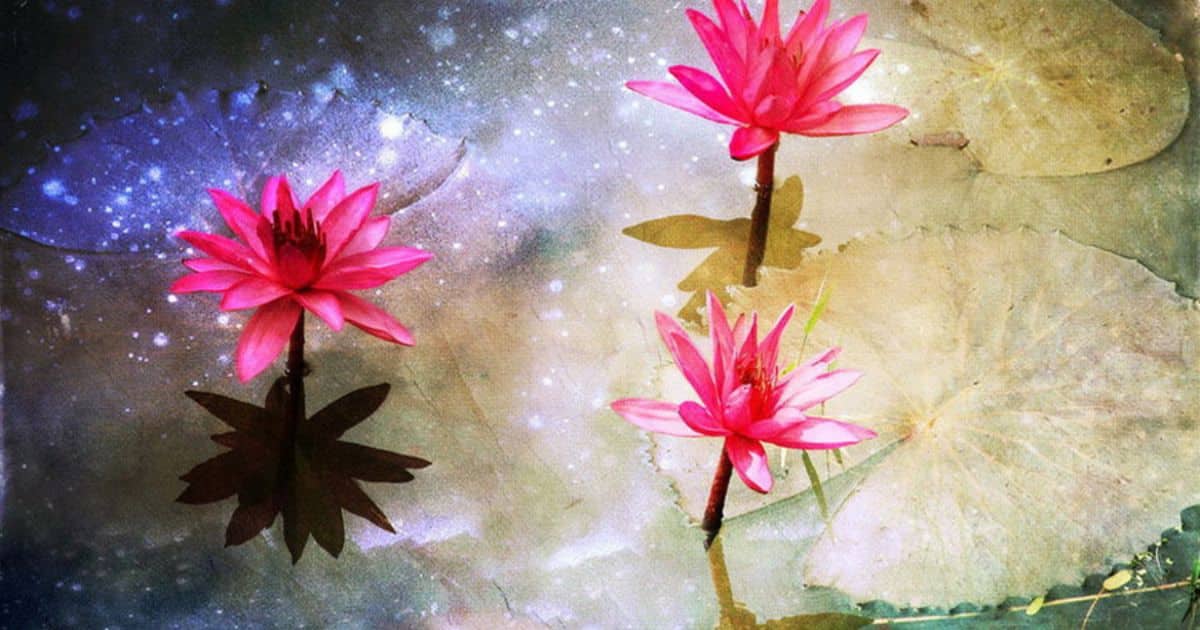
Conclusion
Whether you’re intrigued by its spiritual significance or captivated by its sheer beauty, the lotus flower has captivated millions with its timeless symbolism. From ancient Egypt to Buddhism, the lotus has been revered and celebrated for centuries. Its symbolism as a symbol of purity, beauty, resilience, and spiritual enlightenment resonates across different cultures and religions.
The lotus flower teaches us valuable lessons about the journey of the soul, the power of resilience, and the pursuit of spiritual enlightenment. By understanding and embracing the symbolism of the lotus flower, we can find inspiration and guidance in our own lives. So next time you see a lotus flower, take a moment to appreciate its beauty and reflect on the profound messages it holds.
Wearing a lotus flower necklace goes beyond just a fashion statement. It carries deep symbolism and spiritual significance that resonates with individuals around the world. The lotus flower’s ability to rise above adversity and transform into a beautiful bloom serves as a reminder to stay grounded, strive for personal growth, and find inner peace.
Whether you wear a lotus flower necklace for its aesthetic appeal, its spiritual symbolism, or both, it is a beautiful and meaningful piece of jewelry that can showcase your spirituality and individuality. With its rich cultural history, diverse designs, and spiritual and healing properties, the lotus flower necklace is a timeless accessory that can be cherished for years to come. So, embrace the beauty and symbolism of the lotus flower and let it inspire you on your own personal journey of transformation and enlightenment.

